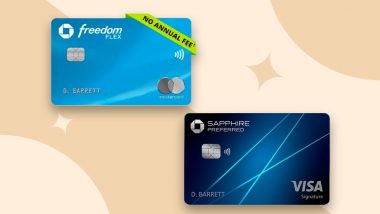Finally ready to go on your next international trip? Whether it’s a business meeting in Brussels or a gastronomic tour of Florence, you might want to consider packing a prepaid pass for the trip.
Prepaid travel cards allow you to receive cash in the local currency of your destination without the risk of using a debit card. They also help you avoid the high fees for cashing out on a credit card or the hassle of collecting traveler’s checks before you leave.
But be careful – despite the convenience of prepaid travel cards, they come with their own set of fees and limits (most notably limits on ATM withdrawals and purchase amounts that can ruin your vacation).
“The prepaid travel card is one tool in a diverse travel wallet,” Julie Hall, internal communications manager for Hilton Grand Vacations and former public relations manager for AAA, said in a previous interview. “This is one of the most convenient ways to get money while traveling.”
Let’s take a look at everything you need to know about prepaid travel cards, from how they work to the pros and cons of using them for your travels.
How do prepaid travel cards work?
Prepaid travel cards work in the same way as general purpose prepaid cards, except that they usually offer special travel-specific features and benefits, which may vary depending on the issuing bank.
Typically, to use a prepaid travel card, you buy the card and top it up at the same time with the funds you want to spend on the trip, up to the maximum amount allowed on the card. (For example, the PayPal Prepaid Mastercard®, a regular prepaid card, allows a maximum balance of $15,000.)
Once you arrive at your destination, you can use your prepaid card to make purchases directly (same as with a debit card). You can also use it at an ATM to get cash in the currency of your destination.
Depending on your card issuer, you may be able to sign into the mobile app or your online account to check your balance, view your purchases, and view any charges.
What are the benefits of a prepaid travel card?
Why not just take cash, credit and debit cards with you the next time you travel to another country? Why are you also taking a prepaid credit card?
If you lose your card, thieves will only have access to the loaded money
If a thief gains access to your prepaid card abroad, they will only have access to any funds loaded onto the card (unlike debit cards, which can give the thief access to your bank account, or credit cards, which the thief can withdraw up to a certain limit).
In addition, the network through which a prepaid card is offered may have a zero liability policy, although in general, prepaid cards do not provide the same breadth of protection as debit and credit cards (think chargebacks and fraud alerts).
Travel Benefits
Prepaid travel cards may offer some of the perks normally associated with rewards credit cards. For example, the Visa TravelMoney card from Inova Credit Union offers travel assistance and emergency assistance, zero liability protection, and an emergency card and cash replacement. You can also set spending limits on this card so you don’t waste your budget while traveling.
More convenient than travelers checks
Prepaid travel cards also provide more convenience than, say, traveler’s checks (which, yes, still exist). Getting travelers checks before you leave can be a hassle, and you might also be surprised at how many retailers around the world no longer accept them. As a result, prepaid cards are often a better option than these paper checks.
What are the disadvantages of a prepaid travel card?
Like most financial products, prepaid travel cards have their pros and cons. Here are some of the disadvantages of using:
Foreign transaction fees, including
Travelers should be wary of the fees associated with prepaid cards as they can add up to a large amount of money during an international trip. One of the most common (and costly) associated with many prepaid cards is the international transaction fee. For example, the AAA MemberPay Visa® prepaid card offers users a 3 percent foreign transaction fee for purchases made outside of the United States. Today it is much easier to find credit cards without foreign transaction fees than prepaid cards without them.
In addition, prepaid travel cards may also charge a card purchase fee, an ATM withdrawal fee, a higher foreign ATM withdrawal fee, an inactivity fee, and a check balance fee.
No help for your credit score
If you pay for restaurant meals, souvenirs, and tickets with a traditional credit card and pay your bill on time, your three-digit credit score will increase. This does not happen with purchases you make with prepaid travel cards because your prepaid card activity is not reported to national credit bureaus.
If you don’t track, you may run out of funds
If you’re used to using a credit card without much thought, chances are that a prepaid card could leave you in the lurch when you go shopping. Just keep track of the amount of money you have loaded and spent on your card.
Tips for prepaid travel cards
Prepaid travel cards come with some potential barriers. Here are some tips on how to avoid the most common disadvantages of these cards:
- Check the fees associated with your card (or potential card): Prepaid cards can charge fees that existing debit and credit card holders are not used to, so it’s important to read the fine print before taking a swipe. For example, a Netspend® Visa® prepaid card charges a $5.95 inactivity fee per month after the card has not been used for 90 days.
- Make sure the card will work at your destination: Double check with your issuer whether your prepaid card will be accepted where you are traveling. Even a card designed for international travel may not work in certain locations due to US trade sanctions restrictions.
- Know the limits: Prepaid travel cards usually have restrictions that can ruin your trip if you don’t figure them out beforehand. For example, some cards may have a daily top-up limit of up to $500 (or up to $7,500 in the case of a Netspend Visa card). Once again, make sure you read the fine print of your card before you get started.
- Avoid retention at all costs: In a sense, prepaid travel cards work like debit cards. Be sure to avoid using a prepaid travel card to book a hotel room or rental car, which can result in a hold that can tie up your cash for hundreds of dollars for a week or longer. Instead, use a credit card to reserve these items and then use your prepaid card to pay the final costs.
bottom line
A prepaid travel card isn’t without its drawbacks, but if you want an easy way to get cash in your destination’s currency – and you want a quick way to pay merchants when you arrive at your destination abroad – their ease of use can make your life easier. the journey is less stressful.
Editorial disclaimer
The editorial content on this page is based solely on the objective judgment of our contributors and is not based on advertising. It was not provided or ordered by credit card issuers. However, we may receive compensation when you click on links to our partners’ products.


